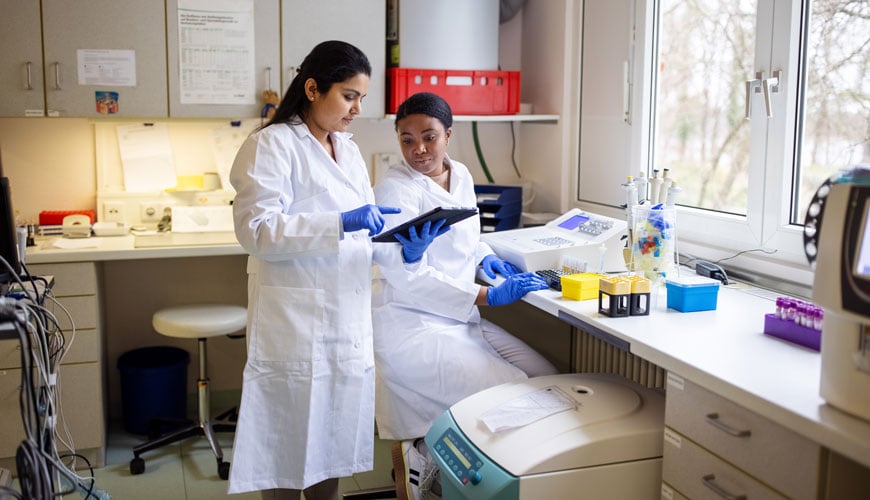
Answering these questions can help differentiate transactional vendor relationships from strategic partnerships that add value.
Supporting pharmacy teams for a better working environment and stronger healthcare system.
Date
October 06, 2022
Read time:
3 minutes

By: Barbara Giacomelli
The pandemic has taken a toll on personnel at the frontline of healthcare. In fact, more than 60% of frontline healthcare workers say the pandemic has negatively impacted their mental health, according to a national survey published from the Kaiser Family Foundation and the Washington Post. In addition, nearly 30% of healthcare workers have considered leaving the profession altogether.1
The role of the health system pharmacy team is essential but doesn’t always have the same visibility as doctors and nurses. The pressure on health system pharmacies during the pandemic has been enormous, with pharmacists and pharmacy technicians working long hours, frequently in a short-staffed environment. Often, a pharmacy’s expanded role during Covid-19 comes without increased reimbursement from payers.
Throughout the pandemic, the role of pharmacists expanded as they adapted to rapidly changing guidelines, launched vaccine clinics and testing sites, and procured hard-to-find therapy treatments. This growth will continue as health systems across the country depend on pharmacists to manage supply and mitigate drug shortages, as well as provide patient guidance on chronic disease medication adherence and monitor risks to avoid unnecessary hospital visits during the pandemic.
Unfortunately, pharmacists are often underrepresented regarding advocacy.2
Pharmacists are the most easily accessible healthcare workers for many patients, leading to a dramatic increase in the number of patients seen during the pandemic.
This increase comes with challenges for pharmacists, including higher risk of infection, information dissemination, and patient education regarding proper hygiene and infection control. Pharmacists are also managing limited resources during COVID-19.

Similarly, pharmacy technicians have also expanded their roles and proficiency in a variety of tasks. Along with technician coordination operator, the role of pharmacy communication coordinator also emerged, aimed at assisting staff and other departments with communications. Additionally, a drug shortage management coordinator role developed during the pandemic, centralizing the task of obtaining critically needed medications for entire health systems. This position allowed for up-to-date communications throughout health systems about critical medications, manufacturer policies, and inventory availability.
Labor shortages have impacted health systems pharmacies, and in some cases, their hours of operation. Contributing factors to the labor shortage include resignation, retirement, employee burnout, inadequate pay, long hours, and lack of mental health services.
There are a number of ways health systems can and are adjusting to labor shortages. Adopting predictive analytics can help hospitals gain insight into workforce levels to ensure the continuity of patient care. In addition to analytics, health systems are implementing flexible scheduling to cover shifts and pharmacy hours of operation. Healthcare organizations are also implementing or expanding training programs for healthcare providers, including pharmacy technicians who free-up healthcare providers for patient care functions through the outsourcing of non-patient care services.
It is also important to make sure pharmacy teams feel heard regarding important issues around staffing, safety, and technology. These important conversations can lead to optimizing working conditions and job satisfaction. Organizations should also provide recognition and adequate pay, as well as opportunities for employees to practice self-care.
The American Society of Health-System Pharmacists (ASHP) encourages the pharmacy workforce to advance patient care and strengthen the pharmacy profession by promoting and modeling professionalism in everyday practice across diverse settings, roles, and institutions.
Recently, The ASHP Statement on Professionalism addressed the responsibilities of all members, including pharmacists, students, interns, residents, and pharmacy technicians.
The statement calls for the pharmacy workforce to:
Health system pharmacies have a vital role in the community, and their well-being is a top concern for health system administrators. Preventing burnout and improving employee morale leads to improved job satisfaction. As healthcare professionals retire and the pandemic wanes, it will be especially critical for health systems to propose solutions for easing the burden on staff.
Learn how we help health systems achieve more.
1https://www.hcinnovationgroup.com/policy-value-based-care/staffing-professional-development/news/21219802/washington-postkff-survey-fully-29-percent-of-healthcare-workers-might-leave-the-field
2https://link.springer.com/article/10.1186/s40545-020-00252-0